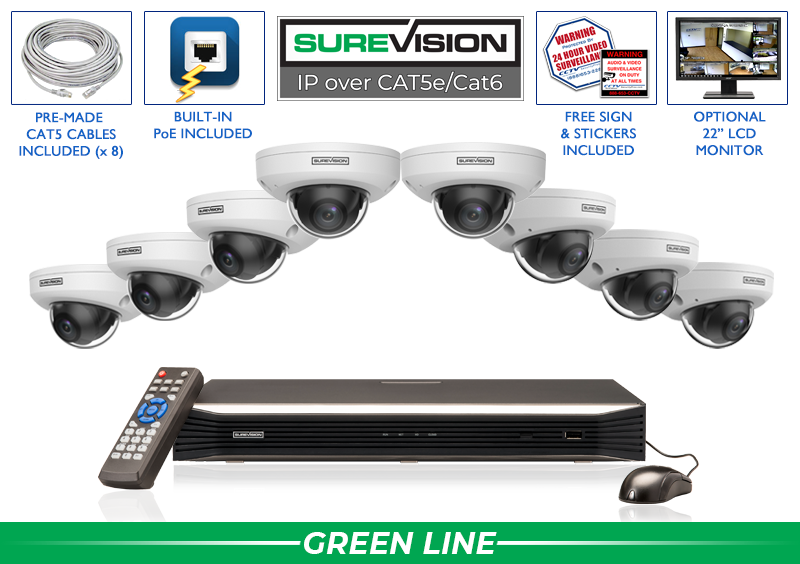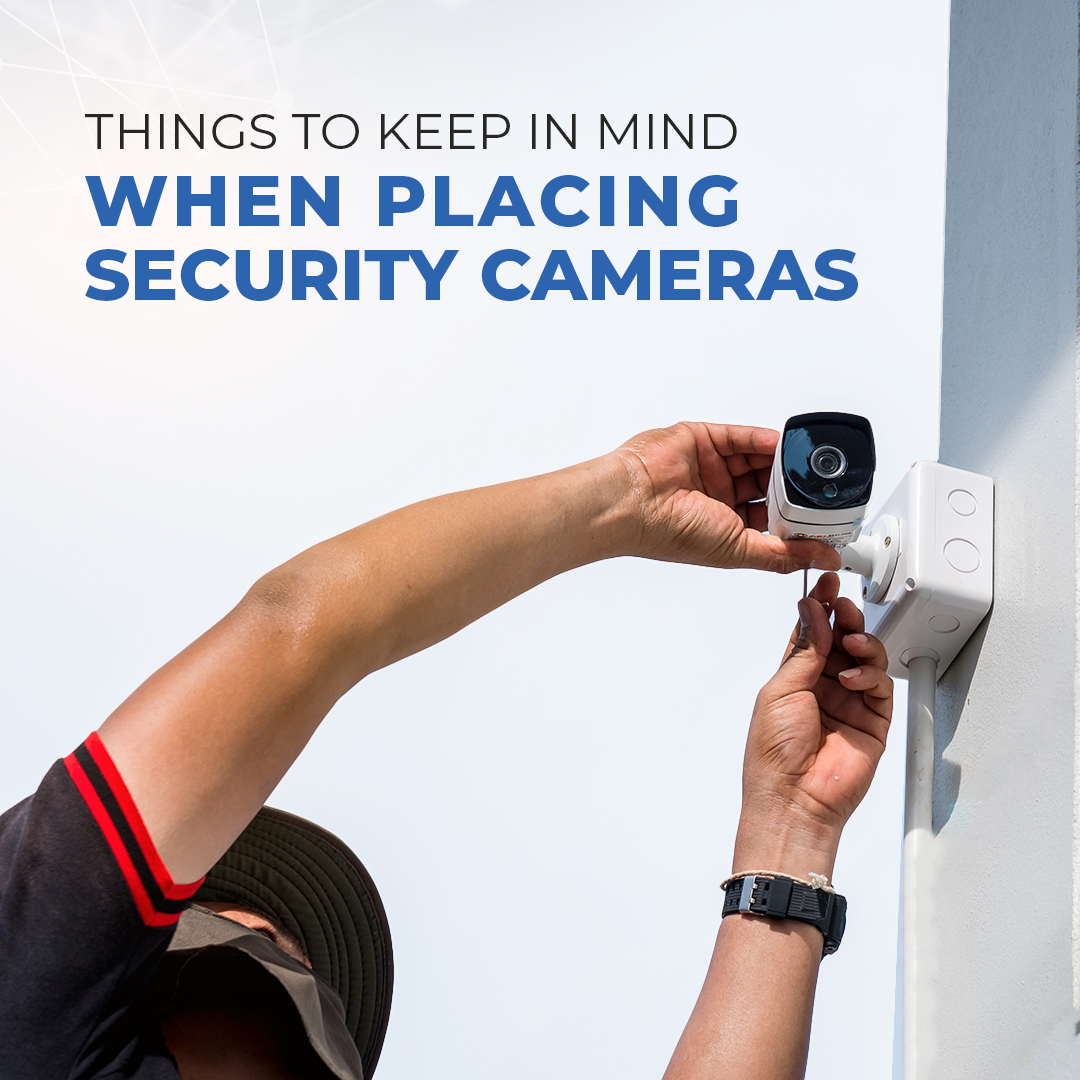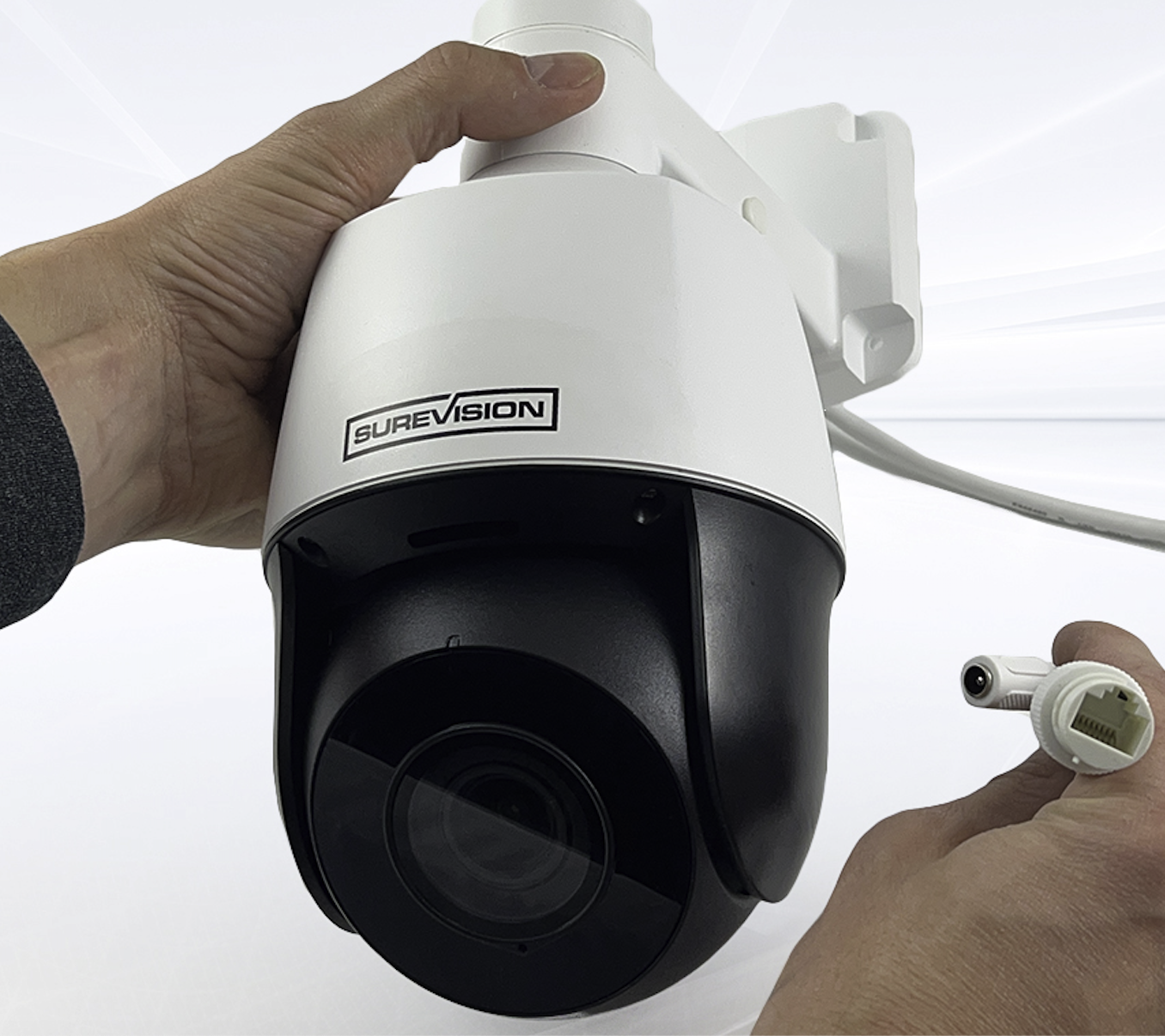Guide to Installing a IP Security Camera System with NVR
Sep 12, 2023
Installing an IP Security Camera System with NVR

IP Security Camera Systems
In today's world having a reliable security camera system is essential. One of the most popular options available to consumers is the IP security camera system with NVR (Network Video Recorder). It is very easy to install our IP Security Camera Systems. We at CCTV Security Pros recommend IP security camera systems with NVR for all new system installation.
This comprehensive guide will walk you through the process of installing such a system, ensuring that your property remains protected.
Understanding PoE IP Security Camera Systems
Definition and Benefits of PoE (Power over Ethernet) Technology
PoE technology eliminates the need for separate power cables by providing power and data transmission through a single Ethernet cable. This not only simplifies installation but also enhances flexibility in camera placement. By leveraging your existing Ethernet infrastructure, PoE IP cameras offer a hassle-free solution.
Key Components of PoE IP Security Camera System
A typical PoE IP security camera system consists of several components. The primary components include PoE cameras, a PoE network switch, and a Network Video Recorder (NVR). The PoE cameras capture high-resolution video, the PoE switch powers and connects the cameras to the network, and the NVR serves as the central hub for storing and managing the video data.
Different Types of IP Cameras Available in the Market
When it comes to PoE IP cameras, there is a wide variety to choose from, catering to different needs and specifications. Some popular options include dome cameras for discreet surveillance, bullet cameras for outdoor monitoring, and PTZ (Pan-Tilt-Zoom) cameras for versatile coverage. Each type offers unique features designed to meet specific requirements. All of our IP cameras are built for both indoor and outdoor IP surveillance. Our outdoor cameras include bullet, dome, fisheye security cameras, license plate, and even outdoor security cameras with microphones.

Planning the Installation
Before diving into the installation process, it's crucial to plan meticulously to ensure a seamless setup.
Assessing Security Needs and Determining Camera Placement
Start by evaluating your security needs. Identify key areas that require monitoring and determine the number of cameras needed. Consider factors such as entrances, blind spots, and valuable assets that need protection. This assessment will guide you in determining the optimal camera placement for maximum coverage.
Calculating Required Camera Resolution and Lens Selection
To achieve the desired level of detail in your surveillance footage, it's vital to select cameras with appropriate resolutions. Higher resolution cameras allow for clearer, more defined images. Additionally, consider the focal length and lens type based on the specific areas you wish to monitor, as different lenses offer varying angles of view.
Configuring Network Requirements for Smooth Operation
To ensure smooth operation of your PoE IP camera system, address the network requirements. Make sure your network infrastructure can handle the bandwidth required for multiple camera feeds. Optimize network settings such as Quality of Service (QoS) to prioritize video data transmission and minimize latency.

Preparing the Environment
A properly prepared environment sets the foundation for a reliable and long-lasting security camera system.
Ensuring Proper Electrical and Network Infrastructure
Before proceeding with the installation, ensure that your electrical and network infrastructure is capable of supporting the PoE IP camera system. Verify that the electrical outlets are in proximity to the desired camera locations and that the network cabling is properly installed and functioning.
Mounting Camera Brackets and Preparing Cable Routes
Security camera brackets to the desired mounting points, taking into account optimal angles and coverage. Plan the cable routes to conceal the wires and protect them from potential damage. Proper cable management not only enhances the aesthetics but also reduces the risk of accidental disconnection.
Securing Protection Against Weather Elements and Vandalism
If you plan on installing outdoor IP cameras, it's crucial to choose weather-resistant models. These cameras are specifically designed to withstand harsh environmental conditions such as rain, wind, and extreme temperatures. Additionally, consider anti-vandalism features like tamper-resistant housings to protect your investment.

Setting Up the Network Video Recorder (NVR)
The NVR plays a pivotal role in your PoE IP camera system, as it manages and stores all recorded footage.
Understanding the Role of NVR in an IP Camera System
The NVR serves as the central hub for your IP camera system, handling video recording, storage, and camera management. It eliminates the need for a dedicated computer by offering a purpose-built device that is easy to operate.
Connecting NVR to the Network and Configuring Network Settings
To ensure seamless operation, connect the NVR to your network using an Ethernet cable. Ensure that the NVR is assigned a unique IP address to enable communication with the cameras seamlessly. Configure network settings on the NVR, including network security protocols and remote access permissions.
Configuring Storage and Recording Settings on the NVR
Customize storage and recording settings on the NVR to suit your requirements. Determine factors such as recording modes (continuous or motion-based), video resolution, and compression settings. Adjusting these settings can help optimize storage capacity without compromising video quality.

Installing and Connecting PoE IP Cameras
Now it's time to install the PoE IP cameras and establish proper connections with the NVR.
Step-by-Step Guide to Installing and Mounting PoE IP Cameras
Carefully follow the manufacturer's instructions to mount the PoE IP cameras securely. Ensure that the cameras are positioned to cover the desired monitoring areas effectively. Use appropriate tools and hardware to fasten the cameras, guaranteeing stability and durability.
Connecting Cameras to the NVR Using PoE Switch and Cables
Our NVRs have built in PoE for up to 16 cameras. If using an NVR with more than 16 cameras you will need to add a Security Camera PoE switch. For systems over 16 cameras, connect the IP cameras to the PoE switch using the Ethernet cables. The PoE switch will provide both power and data transmission to the cameras, simplifying the installation process. Confirm that the connections are secure and functional, ensuring a reliable network connection.
Adjusting Camera Angles and Optimizing Field of View (FOV)
After connecting the cameras to the NVR, adjust their angles to optimize the field of view (FOV). Fine-tune the positioning to capture the desired areas while avoiding obstructions or unwanted objects in the frame. Ensure that the cameras are aligned correctly for maximum surveillance effectiveness.

Configuring Camera Settings
To fully harness the capabilities of your PoE IP cameras, configure their settings according to your preferences.
Accessing Camera Settings via Web Interface or Management Software
Most PoE IP cameras provide a user-friendly web interface or management software that allows you to access and modify camera settings. Through this interface, you can adjust parameters such as exposure, focus, white balance, and image enhancement settings. Familiarize yourself with the camera's software for optimal control.
Adjusting Camera Parameters such as Exposure, Focus, and White Balance
Fine-tuning camera parameters ensures optimal image quality. Adjust exposure settings to balance light and dark areas in the frame, focusing settings to achieve crystal-clear images, and white balance settings to accurately reproduce colors. Experiment with these parameters to achieve the desired visual results.
Enabling Advanced Features like Motion Detection and Night Vision
To enhance the capabilities of your surveillance system, enable advanced features on your PoE IP cameras. Motion detection allows the cameras to trigger recording only when movement is detected, conserving storage space. Night vision empowers the cameras to capture clear images in low-light conditions, extending surveillance capabilities.
____________________________________________________

Ensuring Remote Access and Viewing
To monitor your property remotely, configure the system to allow access from mobile devices or computers.
Setting Up Remote Access for Viewing Cameras from Mobile Devices or Computers
Leverage the capabilities of your PoE IP camera system by setting up remote access. Configure the system to allow viewing of live camera feeds and recorded footage from mobile devices or computers via the internet. This ensures that you can keep an eye on your property from anywhere, providing peace of mind.
Configuring Router and Port Forwarding for External Network Access
To enable external network access, configure your router to forward the necessary ports for your PoE IP camera system. This step enables secure communication between the cameras, NVR, and external devices. Ensure that the router settings are properly configured to maintain the system's integrity and protect against unauthorized access.
Using Dedicated Surveillance Apps for Easy Monitoring on the Go
Streamline remote monitoring by utilizing dedicated surveillance apps provided by the manufacturer. These apps offer user-friendly interfaces, enabling easy access to your PoE IP camera system from your mobile devices. Monitor your property on the go, receive notifications, and access recorded footage conveniently and efficiently.
____________________________________________________
Integrating Additional Security Features
Enhance the security capabilities of your PoE IP camera system by integrating additional features.
Adding Motion Sensor Lights for Enhanced Security and Deterrence
Motion sensor lights complement your surveillance system by providing additional illumination when motion is detected. Strategically install these lights to eliminate dark areas and deter potential intruders. The synchronized activation of both the lights and cameras can significantly enhance the effectiveness of your security setup.
Integrating Alarms and Sirens for Intrusion Detection and Alerts
Enable intrusion detection by integrating alarms and sirens with your PoE IP camera system. This integration ensures that alarms are triggered when the cameras detect unauthorized movement. The audible alerts not only deter intruders but also alert you and nearby individuals to potential security breaches.
Exploring Integration with Smart Home Automation Systems
Consider integrating your PoE IP camera system with smart home automation systems for increased convenience and control. Automate tasks such as turning on lights when motion is detected or receiving alerts on compatible devices. Seamless integration with smart home technology enhances the overall security ecosystem.
____________________________________________________
Troubleshooting and Maintenance
To ensure the smooth operation of your PoE IP camera system, it's important to be aware of common issues and employ regular maintenance practices.
Common Installation and Setup Issues and Their Solutions
Despite careful planning, installation and setup issues may arise. These can include connectivity problems, incorrect camera settings, or difficulties accessing the live feed. Troubleshooting these issues, such as ensuring proper cable connections and verifying network settings, can help resolve common problems.
Regular Maintenance Practices to Ensure Optimal Camera Performance
Maintaining your PoE IP camera system is essential for long-term reliability and performance. Regularly clean camera lenses to prevent dirt or smudges from obstructing the view. Inspect cable connections for signs of wear or damage. Keep software and firmware up to date to ensure compatibility and access to the latest features.
Troubleshooting Tips for Network Connectivity and Remote Access Problems
If you experience network connectivity or remote access problems, there are several troubleshooting steps you can follow. Check network cables for proper connections, restart routers or switches if necessary, and verify port forwarding and firewall settings. Consult the manufacturer's support resources for further guidance and assistance.
Summary
In conclusion, the process of installing a PoE IP security camera system with NVR requires careful planning, installation, and thorough configuration. By following the steps outlined in this guide, you can ensure the successful implementation of a robust and reliable surveillance solution. Remember, professional installation may be necessary for complex setups to guarantee optimal performance and peace of mind.
____________________________________________________
Frequently Asked Questions (FAQs)
To address common queries about PoE IP security camera systems, here are some frequently asked questions:
What is the difference between PoE and traditional IP cameras?
Traditional IP cameras require separate power cables, while PoE IP cameras receive power and data transmission through a single Ethernet cable, simplifying installation and reducing clutter.
Can I use a PoE switch with non-PoE IP cameras?
A PoE switch is specifically designed to power PoE devices, so it is not compatible with non-PoE IP cameras. However, there are alternative solutions, such as PoE injectors, that can enable power for non-PoE devices.
Is it possible to expand the camera system in the future?
Yes, PoE IP camera systems are highly scalable. You can easily add more cameras to your existing system as your needs evolve. Ensure that your NVR and PoE switch have sufficient capacity to accommodate additional cameras.
How much storage capacity do I need for continuous recording?
The storage capacity required for continuous recording depends on factors such as the number of cameras, video resolution, compression settings, and retention period. It is essential to calculate this requirement accurately to prevent storage limitations.
What internet speed is required for remote viewing?
The internet speed required for remote viewing depends on the resolution and video compression settings of your PoE IP cameras. Generally, a higher internet speed will result in smoother and faster access to live camera feeds and recorded footage.
Choose a Company that Provides Support
We at CCTV Security Pros back our products with free USA unlimited expert support. If you have any issues, questions, or problems you can call us at (888) 653-2288 and our trained representatives will be happy to address any questions that you have. We back up our products with a three year warranty and a money back satisfaction guarantee. And remember, when you do it yourself you will never pay a monthly fee!
Want to learn more about the security camera systems we sell? Read Our Security Camera System Buyers Guide.
Looking to buy an IP System? We recommend starting with our Best Selling SureVision IP NVR Systems.




